
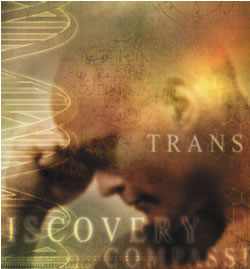

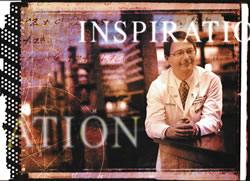
Jonathan Simons, director of the Winship Cancer Institute, is carrying the torch lit more than 60 years ago by Robert Woodruff, who wanted all Georgians to have access to great cancer care. Simons is leading the WCI's quest today toward NCI comprehensive cancer center status, the gold standard for cancer care and discovery.

Just the facts
The Winship Cancer Institute Building
| Opened | July 2003 |
| Size | 280,000 square feet |
| Cost | $75 million |
| Labs | Three floors (81 benches) |
| Patient visits | 100,000 (expected in 2003) |
| Clinical trials | More than 150 |
| Grants | $45 million |
More than words in stone
- Compassion (tunnel level): two linear accelerators,
tunnel connecting the WCI to Clinic A.
- Caring (plaza level): bone marrow transplant
clinic and ambulatory infusion center that includes 60 individual
treatment areas with comfortable infusion chairs, televisions, and
guest chairs.
- Courage (level 1): main entrance from Uppergate
Drive, breast imaging center, financial counseling center, chapel,
family resource center, café, and a boutique featuring wigs, head
coverings, and other cosmetic items.
- Hope (level 2): medical and surgical oncology,
including 34 exam rooms and four minor procedure rooms.
- Imagination, Translation, Discovery (levels 3,4,5): clinical trial space, private procedure rooms, open-design labs, administrative and faculty offices, and a conference center.

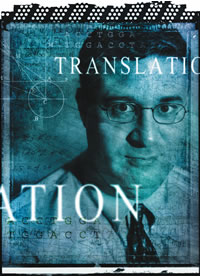
With only a 16% cure rate, lung cancer is now the most lethal cancer in the world, according to Fadlo Khuri, an expert in tobacco-related disease. "Lung cancer patients are not the best advocates for themselves. They have been taught to blame themselves for their cancer. We have to be their advocates at the scientific level."

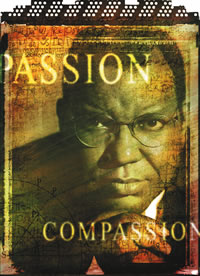
There are many reasons why more than a third of women undergoing chemotherapy for curable breast cancer drop out of treatment at Grady, says Otis Brawley. But community outreach and education programs are countering the major reason -- fear.

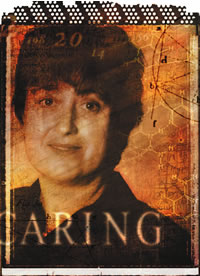
Science that helps patients receive specialized hands-on care as they cope with cancer treatment is the forte of Roberta Kaplow. She has beefed up the curriculum in oncology nursing and provides ongoing education to oncology nurses at Grady.

Scientists go beyond the basics
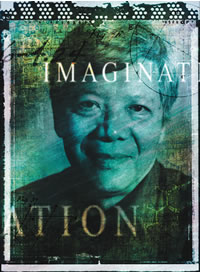
Leland Chung was quite a catch for Emory. An internationally renowned urologist, prostate cancer researcher, and molecular biologist, he is perhaps best known for his investigations of the interplay between cancer and its microenvironment -- the cellular environment around the cancer, the normal tissue around a tumor that supports its growth.
Chung and WCI director Jonathan Simons were recently awarded the largest, federally funded, three-year award for prostate cancer research in history. With the $10 million grant from the US Department of Defense, they will develop a consortium of 13 universities to seek new therapeutic molecular targets and concepts for treating advanced prostate cancer.
Although Chung focuses primarily on prostate cancer, his line of investigation applies to virtually any kind of cancer -- an interdisciplinary way of thinking that marks the new philosophy of the WCI.
"The current technology in cancer treatment is totally focused on cancer cells," he says. "It's narrow-minded. Cancer is a disease that involves an intimate cell-cell communication. It does not grow in a vacuum. It grows in a three-dimensional organization alongside other types of cells -- fibroblastic, muscle, endothelial, inflammatory, and nerve cells. The cancer cells are constantly in touch with the cells around them (stroma). They attach themselves onto things, and because of their interactions with the immune system, they're constantly being stressed out, constantly interacting with the body. The cancer and the stroma are moving targets constantly undergoing change."
Chung is always seeking innovative ways to conduct experiments that closely resemble what happens in the human body. Last winter, he sent prostate tumor cells on board the ill-fated shuttle Columbia, to grow metastatic prostate cells in a three-dimensional, gravity-free environment, with bone stroma mimicking the growth environment of prostate cancer metastasis in the human body.
His quest to unravel the interplay between cancer and its growth environment could lend a much broader understanding of metastasis -- the molecular biology of cancer progression. Understanding why cancer progresses so quickly in some people and more slowly in others could help target more individualized - and more effective - treatments. "By comparing what happens on a molecular level with both the cancer and the stroma at given points in disease progression, we define the differences between patients who die quickly and those who don't," he says. This knowledge could lead to new drugs that target both cancer cells and their surrounding environment to make it more difficult for cancer to spread.
Many other WCI scientists are breaking new ground in basic science discovery, all while keeping cancer patients foremost in their minds. Paraskevi Giannakakou has identified a novel association between the tumor suppressor protein p53 and the cell's structure (cytoskeleton). Chemotherapy drugs that affect the cytoskeleton of cancer cells also affect the function of the p53 protein by altering its location within the cell. Her findings give new insight into the mechanism of drugs that target the cytoskeleton.
"We are learning a lot of basic science about the cellular pathways of genetic damage and how they relate to death, aging, and cancer," says biochemist and radiation oncologist Paul Doetsch, interim head of basic sciences for WCI. For years he has done basic research on systems that repair genetic damage within a cell, including damage that can lead to cancer. His lab discovered a protein produced by African beer yeast that seems to recognize and kick off the repair process for many kinds of genetic damage, including radiation from chemotherapy, ultraviolet light, and normal cell metabolism. He patented the protein and now has a grant from Emtech, a biotechnology incubator formed through a partnership of Emory and Georgia Tech, to develop applications for it. "Developing ways to use this new knowledge to help mankind -- that's the best kind of science there is," he says.
Like Doetsch, Andrew Karellas cares deeply about improving the lot of cancer patients. The medical physicist works closely with Carl D'Orsi, program director for oncologic imaging at WCI and director of breast imaging, to make mammography and other imaging technologies more sensitive by creating high-resolution, three-dimensional images. Their work is a prime example of a basic scientist teaming with a clinician to help patients more quickly.
Chung, like so many WCI scientists and clinicians, keeps real patients in mind while conducting research. "Scientists can stay inside their labs all day, make their discoveries solely for the benefit of 'science,' and never talk to anybody else," Chung says. "But if their discoveries never make a difference for a real human being, what's the point?"

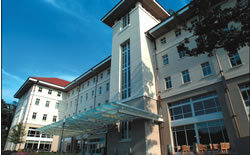
As one of the largest buildings on campus, the new WCI reflects the extent of cancer's reach and the importance the WCI puts on finding new preventions and cures. "We expect to see many patients in this building," says Michael Johns, executive vice president for health affairs. "But the ultimate indication of our success will be when there are no more patients with cancer. By accelerating discovery and hope, maybe we can make that time a little shorter."


"I came to Emory because interdisciplinary work is so important here," says Paraskevi Giannakakou. "Drug discovery is so important for cancer patients, and here we have everyone working together -- cell biologists, pharmacologists, and clinicians. We have great potential for coming up with some novel drugs with great speed."

In this issue
From the CEO / LettersPromises writ in stone
Taking care of people
Taming the obNOXious enzyme
Moving forward
Noteworthy
On Point:
Communicating medical errors

By Valerie Gregg
In 1971, former president Richard Nixon stood on the White House lawn and declared war on cancer, promising a cure by 1977. Today, cancer remains the second leading cause of death in the United States, and one in four people can expect to have a diagnosis of cancer during their lifetime. Many promises have been made to cancer patients and their families over the years. But few have been delivered.
When Robert W. Woodruff gave Emory $50,000 to create a clinic for neoplastic diseases (no one wanted to use the word "cancer" in 1937), the university pledged to bring the most advanced treatments to patients in Georgia and throughout the Southeast. Yet 66 years later, many Georgians must still leave the state for cutting-edge cancer care.
They drive to the University of Alabama at Birmingham or Duke University in North Carolina. They fly to M. D. Anderson Cancer Center in Texas or Memorial Sloan Kettering in New York.
These places attract patients from near and far because they carry a special designation from the federal government as comprehensive cancer centers, a stamp of approval that carries with it funding, cachet, and the very latest clinical trials and technology. Thirty-nine comprehensive cancer centers supported by the National Cancer Institute (NCI) have been established in 32 states since Nixon's pledge in 1971.
But there's not one in Georgia. Not one at the Winship Cancer Institute (WCI).
At least not yet.
A long time coming
The mind of Jonathan Simons, director of the WCI, is a wonderful thing, say those who know him best. It is dynamic, quick, and creative. His excitement and enthusiasm are infectious. And he has the charisma and know-how to turn pie-in-the-sky ideas into reality. Simply put, he makes things happen.
He arrived at Emory in 2000 from the Johns Hopkins School of Medicine to direct the WCI and was charged with turning it into a cancer center worthy of NCI status. A translational scientist-physician with an international reputation in prostate cancer research, Simons, 44, is not one to shy away from a challenge.
For the past three years, he has worked relentlessly to prepare Emory for its second try at comprehensive cancer center status. Emory's first attempt for an NCI planning grant in 1996 was unsuccessful, but this time should be different. A new building, a 400% jump in federal research grants for cancer during the past three years, scores of accomplished new faculty members, and a new culture that brings scientific discovery to the patient bedside have given Emory high hopes for NCI approval.
Establishing an NCI comprehensive cancer center in Georgia is profoundly important for its residents, says Simons, and Emory is where it belongs. "Great universities search for solutions to important problems to humanity, like cancer," he says. "NCI status offers federal support for cancer patients and enormous new options in treatment, diagnosis, and expertise, especially access to clinical trial drugs that NCI is piloting. Comprehensive cancer centers are like satellites of the federal war on cancer. Although many clinical trials are now available at Emory, many more are available at comprehensive cancer centers."
NCI status would also offer Emory more federal funding, use of high-speed computers, highly specialized clinical research nurses, and cutting edge research equipment -- all unavailable to community oncologists.
But earning it is anything but easy. This year, WCI took the first step and applied for a five-year NCI P-20 planning grant, which helps promising cancer centers beef up cancer research programs as they build research infrastructure. The P-20 grant also provides supplemental support grants to faculty. Once WCI receives this grant, it may apply for a second, more detailed NCI P-30 grant. To get both grants, Emory must demonstrate a high level of institutional commitment for cancer and a depth of peer-reviewed cancer research and community outreach. Then, only one more short evaluation would be necessary.
"NCI comprehensive cancer center designation must be earned with the right critical mass of faculty working synergistically, along with a deep commitment by the university to provide a special environment for clinical research and patient care," says Simons. "It is not an entitlement if you build a building. We must earn this designation over time through performance and outreach to Georgians. Many universities in America have taken years and years to earn NCI designation."
Setting the stage
When Michael Johns came to Emory in 1996 to head the Woodruff Health Sciences Center (WHSC), he knew what needed to be done.
"Cancer was not where it needed to be, given that it's the number two leading cause of death in the United States," he says. "Considering Georgia is 10th in population and 25th in cancer research funding nationwide, we had a lot of work to do. We had to retool our priorities to bring Emory's cancer efforts in line with the magnitude of Georgia's cancer problem. To best serve the needs of our patients, we must have a world-class cancer center."
Johns then began the arduous process of putting the pieces in place for a more successful attempt at NCI status -- reorganizing cancer-related disciplines under a single leadership, hiring a new director to provide that leadership, and attracting the best and brightest young cancer scientists and clinicians.
In 1997, just like in 1937, the Woodruff name came through. The Robert W. Woodruff Health Sciences Center Fund was established by the Woodruff Foundation, the Joseph B. Whitehead Foundation, and the Lettie Pate Evans Foundation, providing at least $3 million to the WHSC each year, with half going to the WCI.
Suddenly Johns had the wherewithal to launch a full-fledged attack on cancer. It became a high priority to find a strong leader for the WCI, which had been under interim leadership for four years before Simons came on board. At first the search effort proceeded in fits and starts.
"We couldn't attract a first-rate person until we had our act together," says Johns. "First we had to put together the pieces to make it worthwhile to run a search. Initially, not having the building in place was clearly a handicap. Cancer needed a new building -- a single place where we could bring almost everybody in cancer at Emory together under one roof. It wasn't going to work without a new building. Great people wouldn't even consider coming here without an adequate place to work. So the Woodruff grant put us on a fast track."
But institutional change at top speed on such a wide scale is rarely without bumps in the road.
To keep cancer under one administrative roof, Johns decided hematology and oncology (Hem-Onc), which had always resided in the medical school's Department of Medicine, should be autonomous in the WCI. Administrative control over this division was not relinquished without a struggle, but now it reports to Simons, along with other cancer-related work at Emory.
Johns gives small credence to those who balked at handing over control of Hem-Onc to WCI. "Once we decided to do it, it happened," he says. "Change is hard, and some people have to be comforted through it. They want things to stay the same. But change is inevitable and can lead to great things."
Johns was committed to restructuring cancer in a way that made the most sense - around the patient. "This is the way it has to be," he says. "There was no other way. Basically, we said: 'This train is leaving the station and you'd better jump on.' It would have been backward and self-serving to build something like a cancer center around satisfying faculty egos rather than our patients."
Simons has the autonomy and funding to recruit new faculty and organize research teams as the WCI leadership sees fit -- something past directors lacked. The WCI's predecessor, the Winship Cancer Center so named in 1982, did not have administrative control over most cancer-related work at Emory.
"The Latin word 'institute' means to create a society," he says. "An institute is a society of people coming together to solve a problem. It is more than just a committee. As a society of investigators, we have to go in important new directions together to discover and bring fundamental innovations to patients. We have the ability to become a truly unique NCI comprehensive cancer center, but we need strong teamwork and leadership to pull it off."
A new generation
The breadth and depth of both existing and new basic science faculty in pharmacology, genetics, and molecular biology promises to make the WCI different from many other NCI centers. Also, innovative partnerships such as the joint Emory-Georgia Tech Department of Bioengineering offer broad possibilities for new cancer diagnostics and imaging.
Simons says starting a comprehensive cancer center from scratch offers unique opportunities. "We can build the cancer center the way it needs to be built for this century instead of dealing with the old organization charts that have evolved over time at established comprehensive cancer centers," he says. "Compare what's emerging at Emory to most other cancer centers that are clinically established and big, but not associated with a university. Many don't have close contacts like we do with cell biology, pharmacology, basic research. Emory can do true translational research in a way that many others simply cannot."
Fadlo Khuri is a case in point. The WCI's associate director of clinical and translational research hit the ground running when he arrived in Atlanta in July 2002. He came from M.D. Anderson, where he was chief of molecular therapeutics and chemoprevention. He brought with him five large NIH and Department of Defense research projects and immediately began assembling new research teams, structured across departmental lines. Basic scientists collaborate with clinicians, sharing information and bringing important new discoveries quickly from the laboratory to the bedside and back to the lab bench - the essence of true translational research.
Khuri is part of a new generation of translational oncologists, who are molecular scientists and clinicians rolled into one. It is a new paradigm that promises to speed discoveries from the lab to the patient. This rich exchange of information and ideas between various disciplines is the future of cancer research, says Simons.
"Fadlo Khuri has people in seven different departments working together on head and neck cancer, and he accomplished that in just six months," says Simons. "We're working on lung, prostate, and breast cancer; angiogenesis (the growth of new blood vessels to provide nutrients to tumors); and other cancer problems in the same way -- placing the patients and their cancer at the center and arranging scientists from all the disciplines around them. It's a wonderful way of working."
Khuri is charged with bringing this philosophy to all areas of cancer work at WCI, and he is a natural for the job.
"When I was in medical school, I loved the laboratory," he says. "I was ready to be a lab rat, a basic researcher. But my adviser suggested I do a residency at Boston City Hospital, just to see if I liked it. Well, I loved taking care of patients, and I still loved the lab. So translational research was perfect for me. I wanted to develop and learn things in the laboratory that could actually help real people."
The new generation of scientist-clinicians has been heavily trained in molecular biology and seeks to understand how genes behave when cancer arises, flourishes, and metastasizes. They then use this genomic understanding to come up with new cancer treatments that work on the molecular level.
"Our objective is to convert certain lethal cancers into chronic diseases that patients can live with but not die from," says Khuri, who specializes in tobacco-related diseases. "If we intervene earlier and give different medicines at different stages of disease, we can manipulate the immune system to interfere with cancer cell signaling using different combinations of chemotherapy and small molecules, and manage the disease much like diabetes is managed with insulin. My goal is to develop novel agents that target certain gene activities at different stages of disease. Hopefully, someday I'll see the full spectrum of patients, from those with high risk, precancerous disease to presurgical to postsurgical. That's my goal because it's very hard limiting your practice to patients with terminal illness. You're dealing with human beings, and you grow attached to them."
Playing catch-up
For Otis Brawley, research translation is a matter of social justice. As director of the Georgia Cancer Coalition Center of Excellence at Grady Hospital, he knows first-hand that poor patients don't receive the same treatments as more wealthy and educated patients.
"There's research from 100 years ago that still hasn't translated to the population down here at Grady," says Brawley, who is also WCI associate director for cancer control and professor of medicine, oncology, and epidemiology at Emory. "We serve a population in which 5% of the women with breast cancer don't get it surgically removed. And more than a third of our women undergoing chemotherapy for curable breast cancer drop out of treatment."
The underlying reasons are complex. "There's a group that is offered good care yet walks away from it," he says. "Fear is the main reason. That's why community outreach and education are so important."
Grady has developed extensive programs, especially in breast cancer. Atlanta offers unique opportunities to conduct social science research that other NCI comprehensive cancer centers lack. Atlanta's high proportion of African Americans and racial disparities in cancer deaths offer opportunities to study the epidemiology and sociology of cancer that simply don't exist elsewhere.
"There are many studies that have proven that equal treatment yields equal outcomes," says Brawley. "But our research has proven that in the United States, there is not equal treatment."
Brawley works just a few blocks from the birthplace of the civil rights movement, and in his mind, outstanding cancer care really is a civil rights issue. He can look out one side of his clinic at Grady and see Ebenezer Baptist Church and out the other side see the State Capitol. Having politics on one side and civil rights on the other gives Brawley a special sense of purpose as he goes about his daily work. "We're trying to find the best ways to provide good, adequate care to a population that has not gotten it in the past. We are trying to rectify some things, to answer some basic questions that have gone unanswered for too long. How do we keep these women in the system and keep them coming back to the doctor?"
The unique opportunity to answer such questions should make WCI's application for comprehensive cancer center status stand out from the others, says Brawley.
His connections at NCI, where he spent much of his career before coming to Emory, don't hurt WCI's chances either. "When I told my old boss at NCI that I was coming to Emory and that our goal was to get a comprehensive cancer center designation, he said: 'Recruit translational oncologists, then Emory has much of what it needs to get the designation. It just needs to organize them into a cancer center.' Basically, that's what Michael Johns, Dean Thomas Lawley, and Simons have been doing at an incredible pace."
Coalition for life
And their timing couldn't have been better. Tobacco companies settled massive lawsuits with 46 states, including Georgia, in 1998, agreeing to pay $206 billion over 25 years. While many states decided to use their settlement money for nontobacco-related budget items, former Gov. Roy Barnes decided to use it to fight cancer. He established a massive public-private partnership called the Georgia Cancer Coalition (GCC) that joins foundations, pharmaceutical and biotech firms, universities, and corporations. The GCC has been hailed as the best use of tobacco settlement money in the United States.
The current governor, Sonny Perdue, has pledged to continue the effort and submitted the same budget to the state legislature for the GCC that Barnes did: $31 million to come out of the tobacco settlement money. The state legislature is slated to eventually contribute a total of $300 million to $400 million, primarily from tobacco settlement money, during the next five to seven years, leading to an $800 million initiative, including private contributions.
The creation of the GCC coincided with an explosion of activity at WCI. The GCC established a program to bring 150 eminent scholars to the state to boost the amount of federally funded cancer research in the state. Thirteen of these scholars are now at WCI, and Leland Chung is one of the biggest names.
When Chung first interviewed for a faculty job at the WCI in 1995, he turned it down. "At that time, I did not see the leadership, and I did not see an atmosphere conducive to translational research," he says. "The cancer center seemed small and not very well organized."
But when he came back in 2001, it seemed like a different place. "This time, there was a lot of vitality, creativity, and a new synergy. I felt like the time was right to come here."
Chung saw quite clearly that WCI was on the cusp of becoming an NCI comprehensive cancer center, which broadened the scope of research possibilities and increased research funding. The rapid pace of discovery at WCI will reach the patient bedside in short order. That, says Chung, is why he chose Emory the second time around. The synergistic, uninhibited communication between junior- and senior-level faculty and clinicians is best for scientists like Chung, who love science for its own sake but want to use it to help patients struck with insidious diseases like cancer.
"The scientists now at Emory are unique individuals, a new and different generation of researchers, because they understand and support translational research," he says. "Plenty of people, both scientists and doctors, really don't understand it at all. What's happening here at Emory is part of a new wave, and I wanted to be a part of it."
Promises to keep
Today, the WCI has a state-of-the-art building and a new wave of researchers and clinicians who have come to Emory from around the world to fight cancer. Their new $75 million home reminds them at every turn why they are here.
From the top floor of the just-opened WCI, a massive stone staircase arcs downward again and again, designed like the double helix of a strand of DNA. The staircase is sturdy, deep, and wide, with high windows that seems to bring the blue sky indoors. Etched in stone on each staircase - and outside each elevator, office, and clinic - are the promises so many have come so far to keep: compassion, imagination, discovery, translation, caring, courage, and hope.
The feel is open, roomy, and free. To cancer imaging researcher Andrew Karellas, the new seven-story building feels like a blessing. For about a year, he has worked in a cramped basement lab in the former Anatomy and Physiology Building, dodging traffic across Clifton Road to meet with colleagues and clinicians, sometimes twice a day. "The people I collaborate with were scattered around campus, so it took a lot of time and effort to discuss ideas or results," he says. "And to a scientist, time is very valuable."
Now those days are gone. Three years after the new building began to rise from the rubble of the old psychiatry building on Uppergate Drive, Emory boasts a state-of-the-art facility for patient care and research. Deemed a "discovery accelerator," the 280,000-square-foot building was designed to foster openness and communication among scientists and clinicians across many disciplines of cancer research.
The building's design reflects the philosophy of the institute and provides the environment to make it a reality. "I thought a lot about what the building should be about," says Simons, whose father was a Cornell architecture professor. "I wanted the design to nourish our culture of caring and discovery. We want to be process efficient and innovation rich, have fewer committee meetings and such, because time is about as urgent to the translational scientist as it is to the patient."
The top three floors - labeled "imagination, discovery, and translation" - each house an open lab as long as a football field. Nine-foot whiteboards on the walls near each lab's 27 benches and outside every door of nearby faculty offices offer colleagues a place to exchange ideas, jot down thoughts, or write words of inspiration. A large conference room and the WCI clinical trials and regulatory department are on the first lab floor, and the third-floor houses the WCI conference center, which will seat 125.
Clinical areas, known as "compassion, hope, courage, and caring," are located on the bottom four floors, along with the latest technology in high-tech targeted radiation therapy. Patients will find on these floors a bone marrow transplant clinic, ambulatory treatment center, breast imaging center, financial counseling office, a family resource center, and medical and surgical oncology, including 34 exam rooms and four minor procedure rooms.
Bringing clinicians and researchers together in one location is essential to Emory's readiness to achieve designation as an NCI comprehensive cancer center, says Simons. "The building is designed for the best patient experience and fastest movement of science back and forth between the lab and the patient. We would like every patient to have the opportunity to participate in clinical investigation. Every team of scientists should be able to go downstairs to the patient and clinician, come back up to the research bench, and back again to the clinic. Everything is designed for that back-and-forth interplay of patients, researchers, and clinicians."
What it all boils down to
Bringing the excitement of scientific discovery to bear on the problem of human suffering is the "raison d'être" for the research, the clinical trials, and the place that fosters and brings it all together for the WCI. Ultimately, this kind of science is what it takes to earn NCI comprehensive cancer center status.
The complex enterprise of an institute devoted to cancer must always put patients first, says Johns, a head-and-neck cancer surgeon whose experiences with cancer patients and their families have shaped his career as a leader.
"It's an incredibly difficult situation for a patient to receive a diagnosis of cancer, and helping patients and their families through it is a very important charge," says Johns. "It's a humbling experience. You don't always win these battles, and sometimes, despite our very best efforts, our patients die. But we know what we're doing is really important for patients and families. We're helping them through what can be the most difficult experience of their lives. How can we do less than our very best?"
Valerie Gregg is a freelance writer.
Copyright © Emory University, 2003. All Rights Reserved.
Send comments to the Editors.
Web version by Jaime Henriquez.